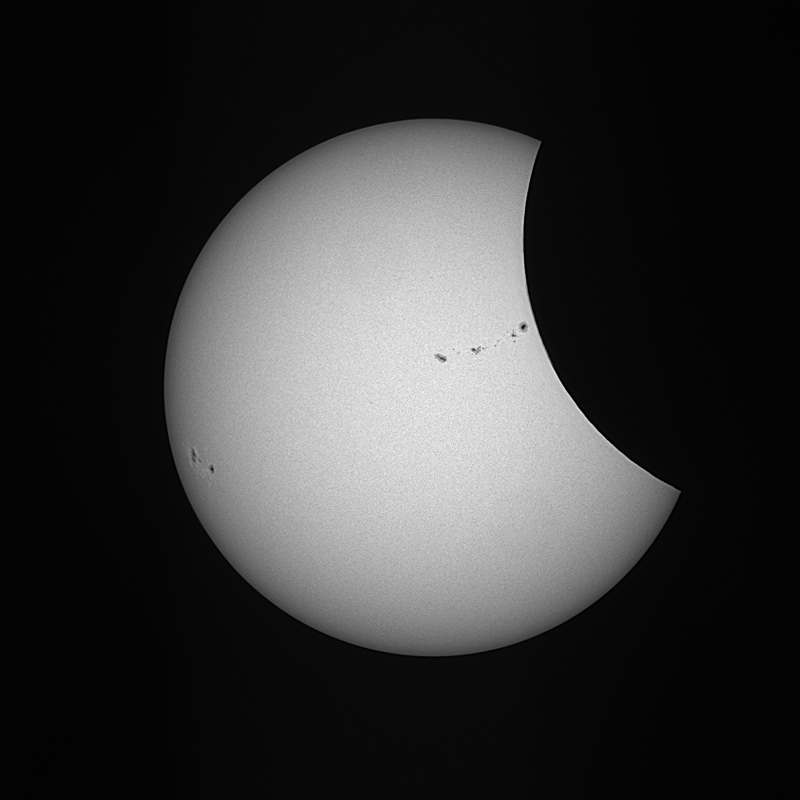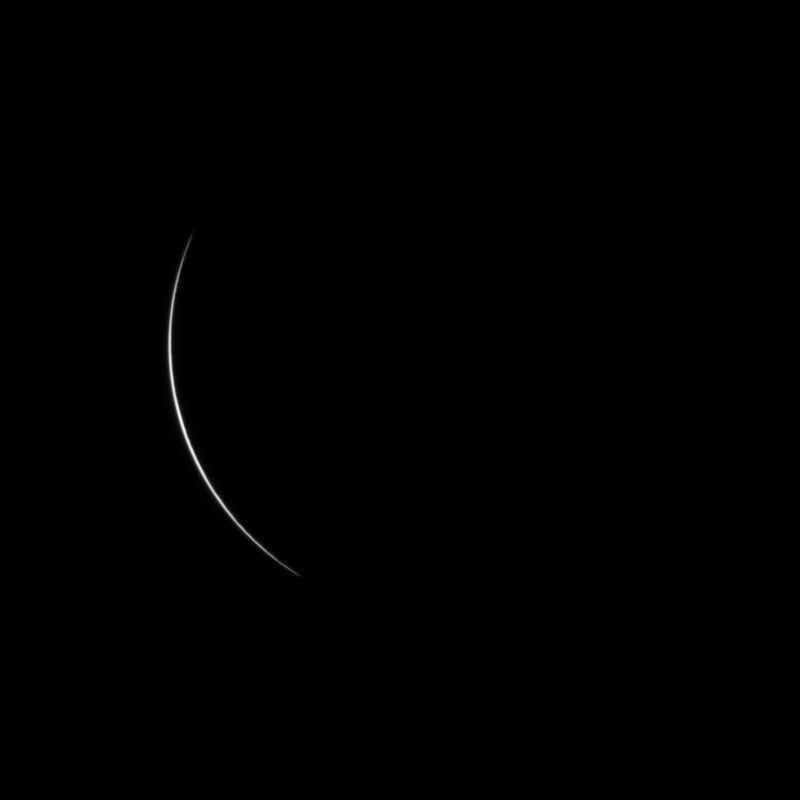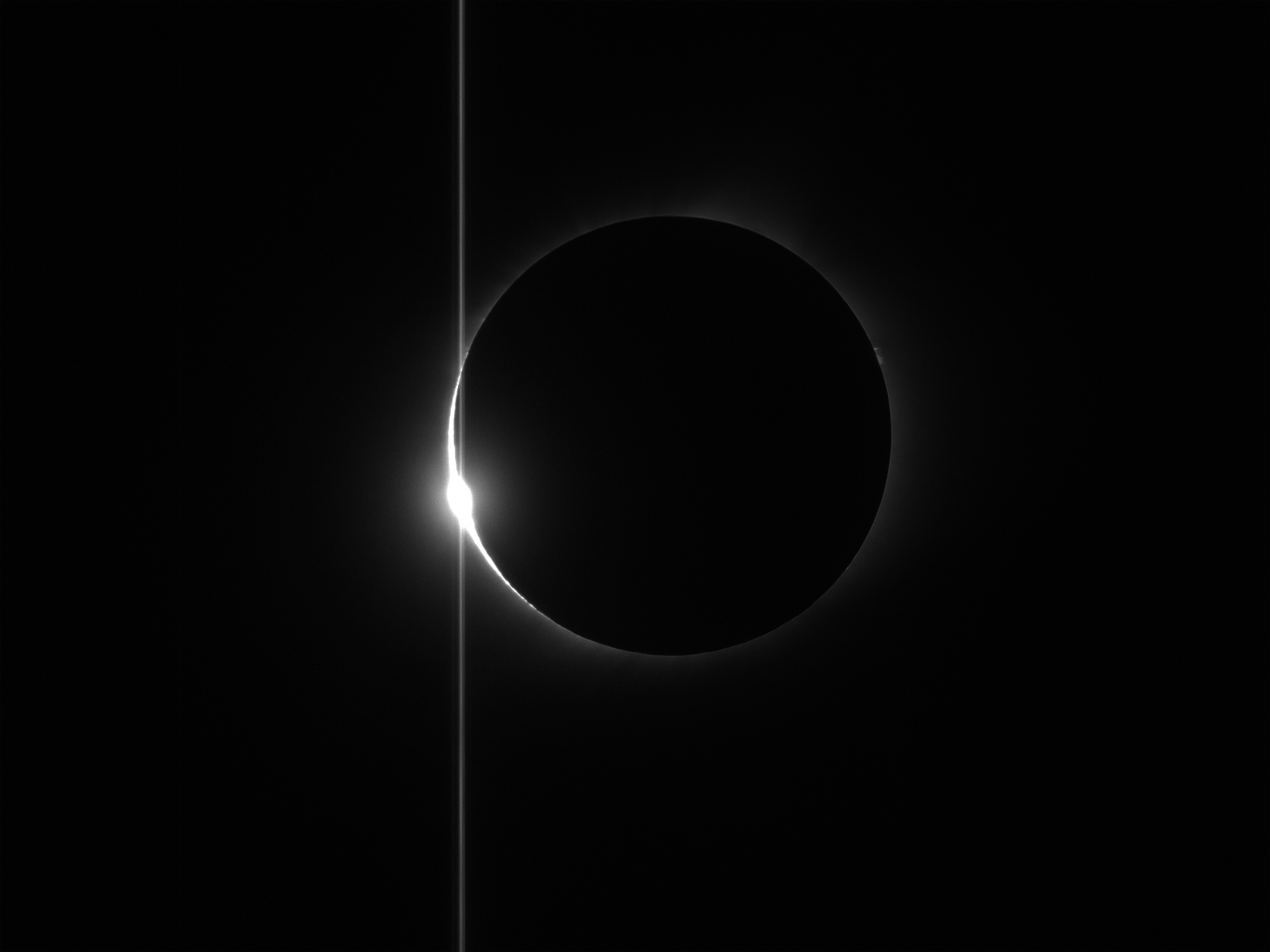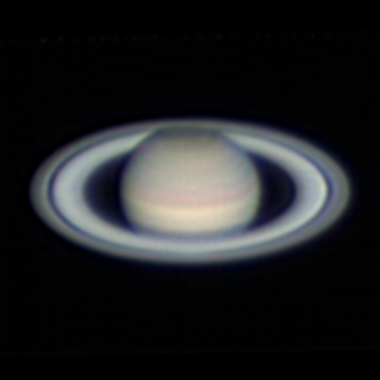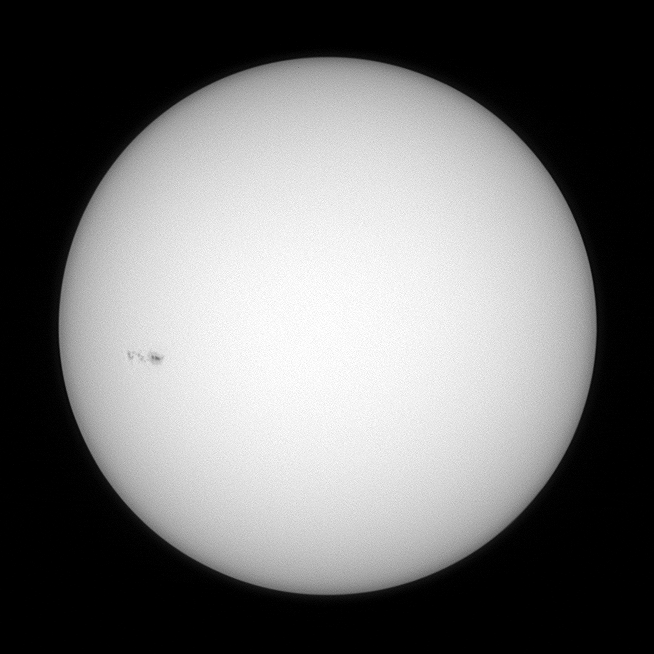a few sunspots are noted in the photosphere, the bright visible surface of the sun.
almost there...
"diamond ring"--final flash of direct sunlight at the start of totality (click for full size):
TOTALITY
bright prominences in the chromosphere are visible with direct sunlight blocked:
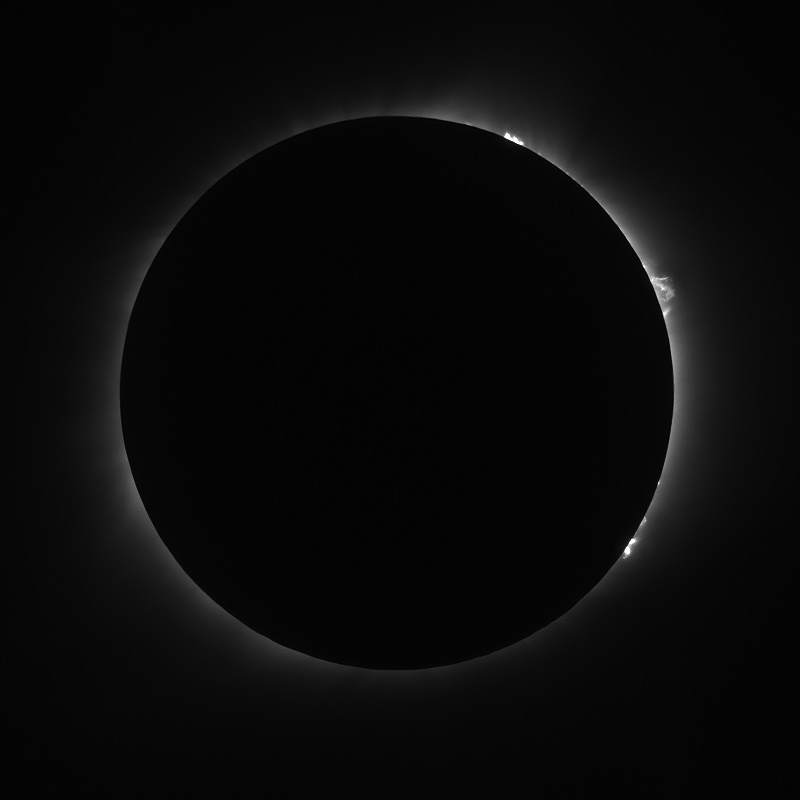 |
| 8/21/2017 Total Solar Eclipse |
longer exposure brings out the outer corona, easily visible to the naked eye, note the magnetic field lines arcing out of the poles, and the subtle arcs lower left (click for full size):
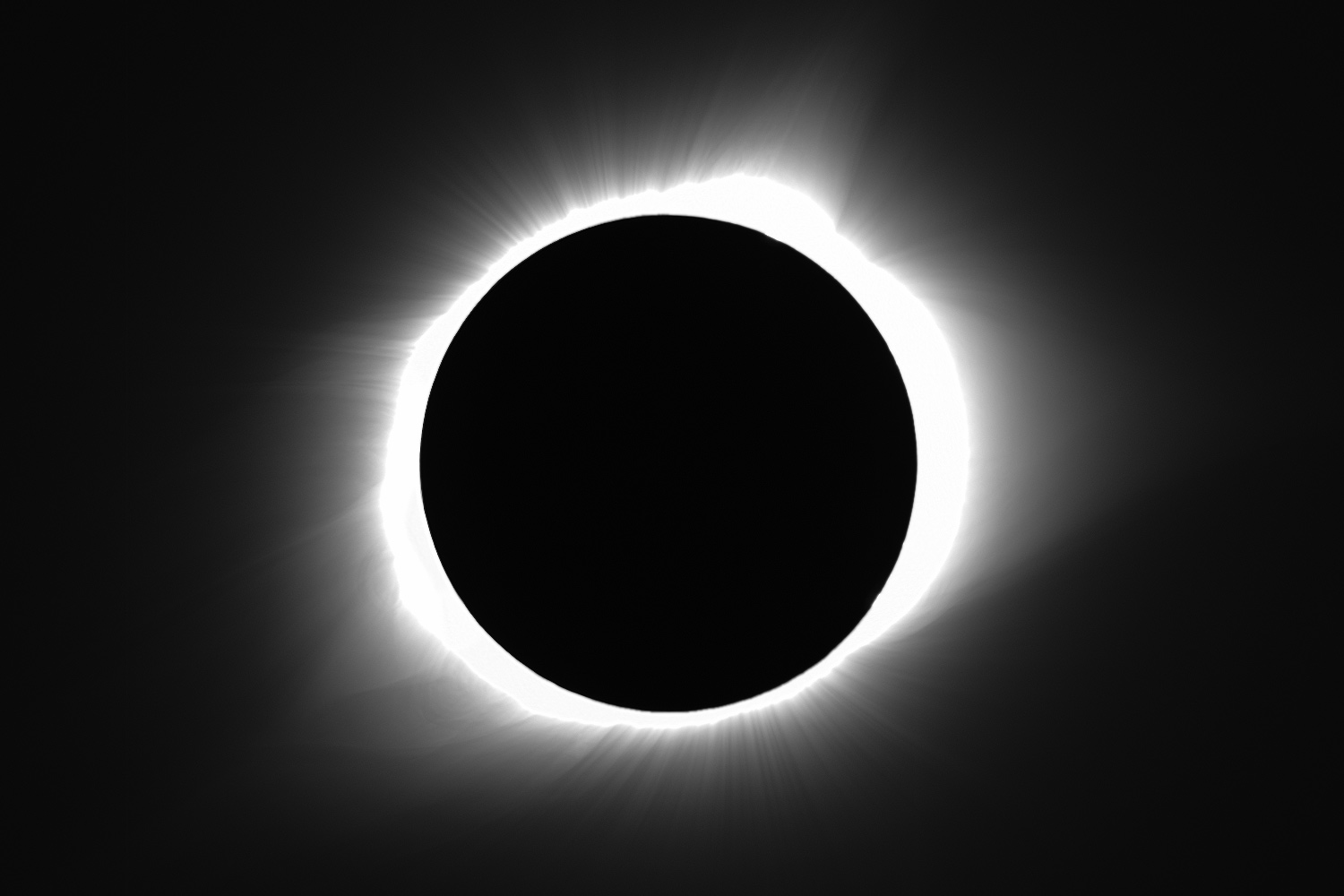 |
| 8/21/2017 Total Solar Eclipse click for full size |
Image details:
DMK 51 web cam, Takahashi FS-60C, 60 mm aperture at f/4.2 with a reducer. Skywatcher star adventurer tracking mount. Baader solar film, Fotga IR/UV cut filter. The full field of view is approximately 96x72 arc minutes with a resolution of 3.6"/px. 20 second video capture at 12 fps, aligned in autostakkert, wavelets in registax.
Casper Wyoming
42,50.9694N 106,15.5688W
8/21/2017
